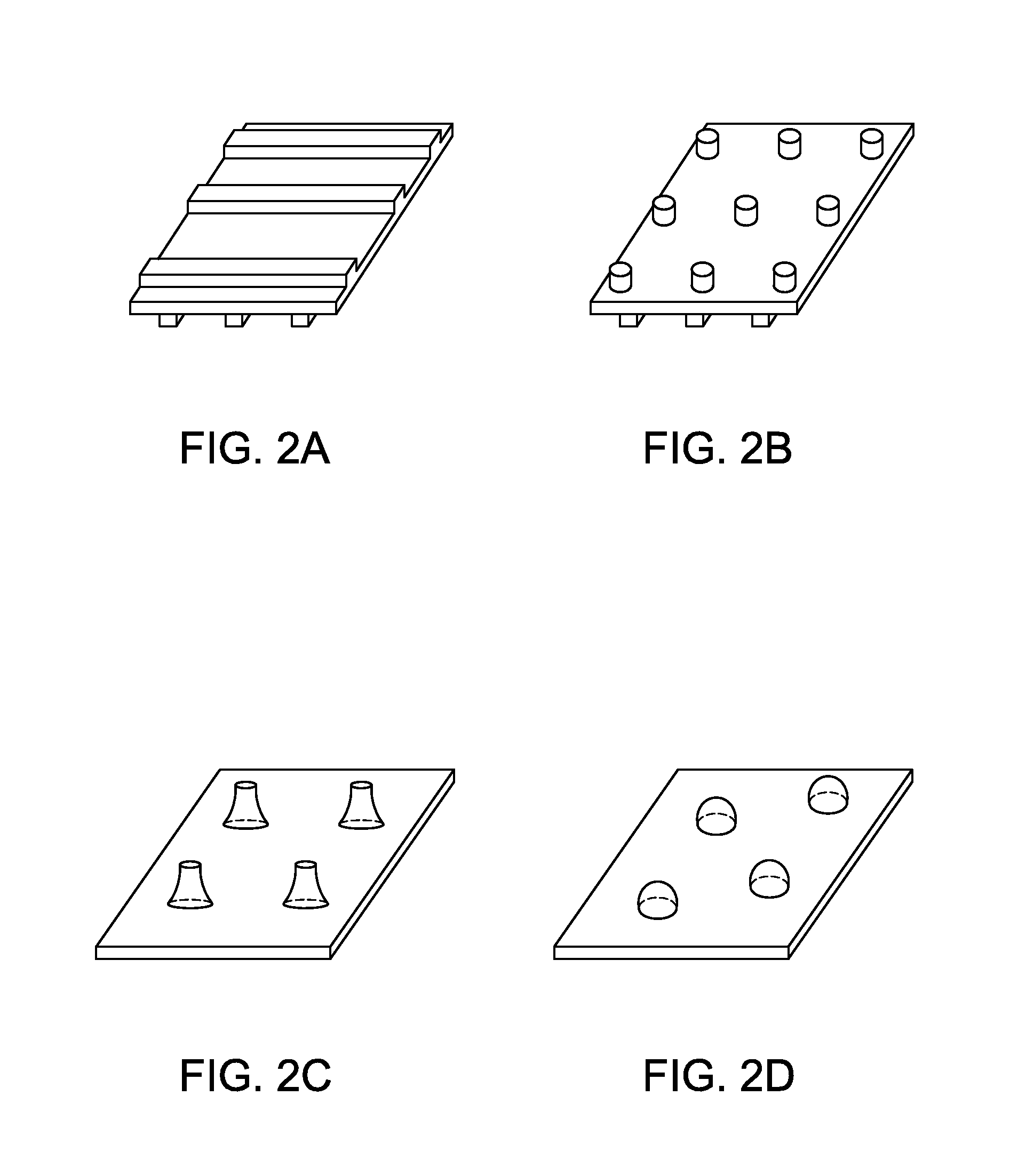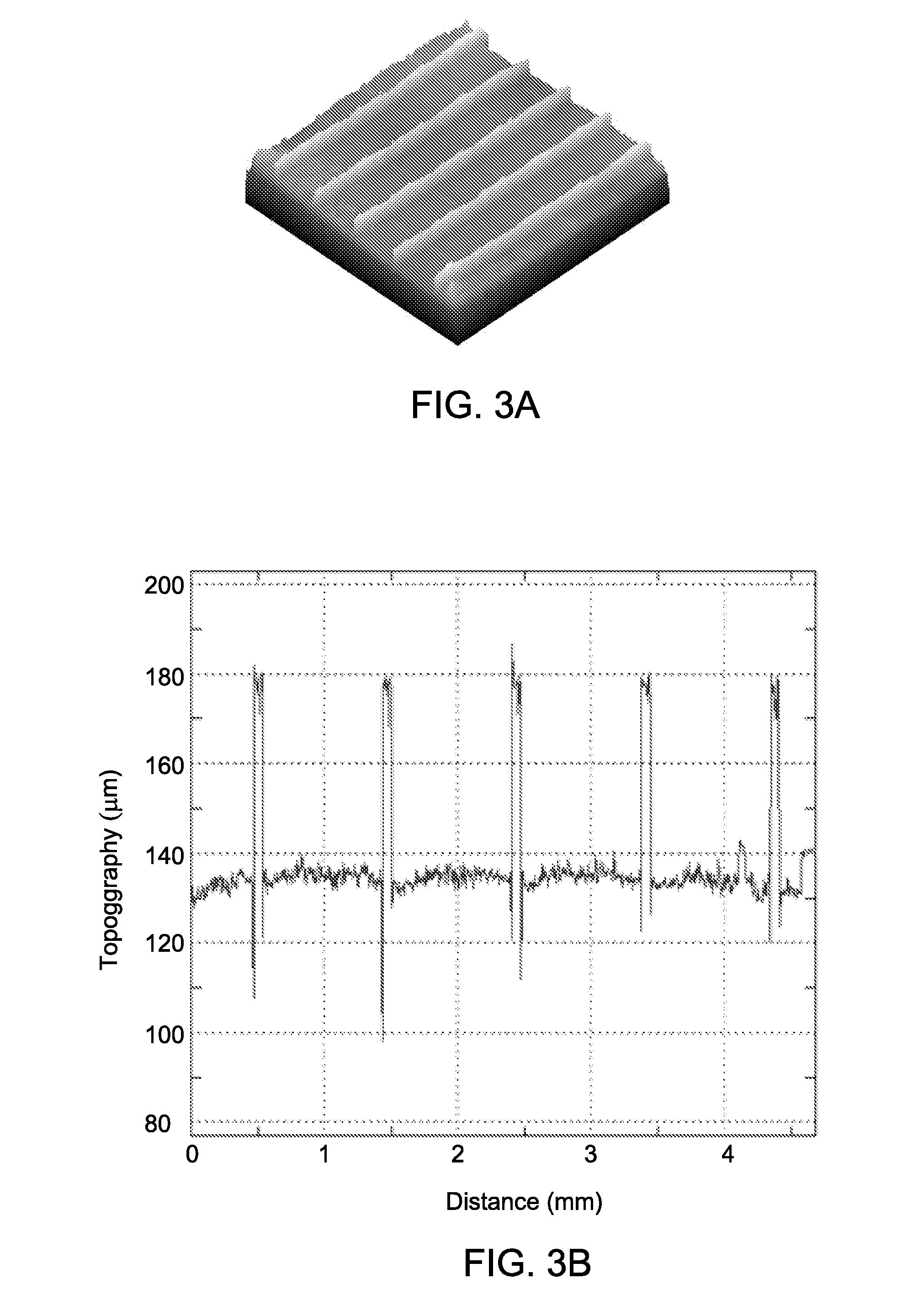Cell carrier, methods of making and use
- Summary
- Abstract
- Description
- Claims
- Application Information
AI Technical Summary
Benefits of technology
Problems solved by technology
Method used
Image
Examples
example 1
Fabrication of Carrier for Growing Cells Using Embossing Process
[0065]A pattern-master was prepared by cutting grooves in a flat aluminum block using a dicing saw, which was outfitted with a resin-bonded diamond blade. A set of parallel grooves (the term being interchangeably used with ‘relief features’) was cut in one direction, for ridge-like design (prototype 1). For post type of design (prototype 2), the holes on a flat aluminum block were drilled to desired depth and spacing using a micro-milling tool with the desired diameter. Finally, an effort was made to remove burrs that had formed in the first set of grooves during the cutting process or drilling process. After the grooves or holes were completed, the aluminum block was cleaned to remove any burrs on its surface. The pattern master determined the pattern geometry of the relief features.
[0066]A first-generation mold was then made from the pattern-master using a silicone rubber-molding compound, RTV 664 from Momentive Perfo...
example 2
Fabrication of Carrier for Growing Cells Using Film Extrusion Process
[0068]Particles, such as hollow glass spheres, solid glass spheres, and polystyrene beads were embedded in the film by extruding the particles and a polystyrene resin mixture. Particles were pre-mixed with polystyrene resin at desired concentration and fed into an extruder. The pre-determined amount of particles were added to the extruder so that the density of extruded film is not altered much from the polystyrene film formed from polystyrene resin, however sufficient particles were protruded on the surface, which generate the relief features.
[0069]In one example, a film with embedded hollow glass spheres (Prototype 3) was made by mixing 4 volume % of hollow glass spheres (25P45, Potters Industries LLC) of diameter 45 μm and density 0.25 g / cc, and ground polystyrene pellets (NOVA 1300, INEOS). The target density of the carrier was 1.01 g / cc. The mixed polystyrene and hollow glass spheres were fed into an extruder ...
example 3
Surface Treatment and Generating Plurality of Carriers
[0072]To make the polystyrene film with relief feature compatible with cell growth, the film was O2 plasma treated using a Plasma Therm SLR vacuum plasma reactor. Plasma treatment was performed on each side of the embossed film for 1 minute at 100 mtorr pressure using 100 sccm (Standard Cubic Centimeters per Minute) O2 flow and 100 W forward radio frequency (RF) power in reactive ion etching (RIE) mode.
[0073]Carriers for cell culture were prepared from the plasma-treated embossed sheets by manually cutting the film into 5 mm×5 mm pieces or 2 mm×2 mm pieces, or by discretizing and then sieving to select a particular size range, or by punching circular discs of the desired size or die-cutting by compressing the film under die-cutter using a hydraulic press.
PUM
 Login to View More
Login to View More Abstract
Description
Claims
Application Information
 Login to View More
Login to View More - R&D Engineer
- R&D Manager
- IP Professional
- Industry Leading Data Capabilities
- Powerful AI technology
- Patent DNA Extraction
Browse by: Latest US Patents, China's latest patents, Technical Efficacy Thesaurus, Application Domain, Technology Topic, Popular Technical Reports.
© 2024 PatSnap. All rights reserved.Legal|Privacy policy|Modern Slavery Act Transparency Statement|Sitemap|About US| Contact US: help@patsnap.com










